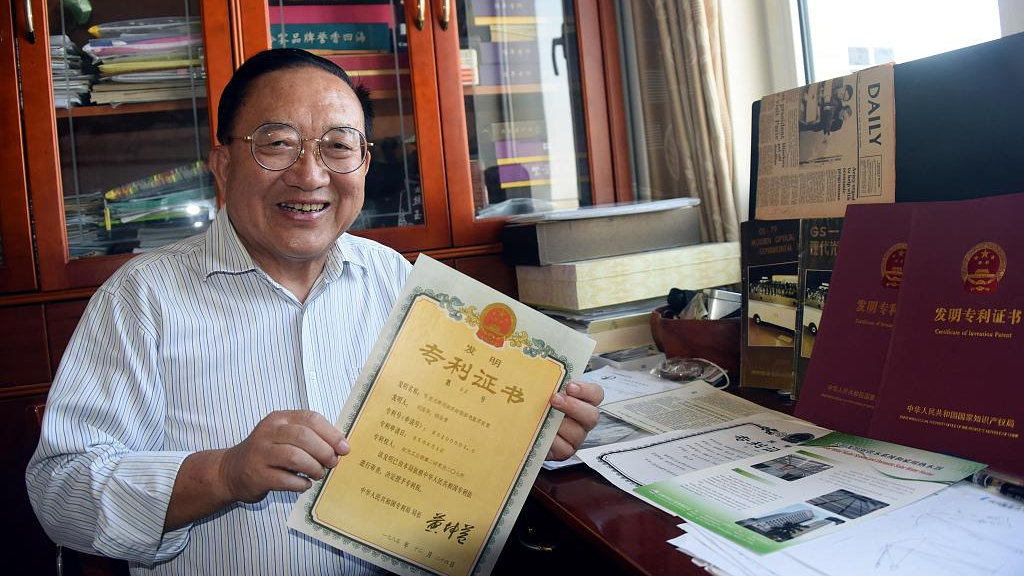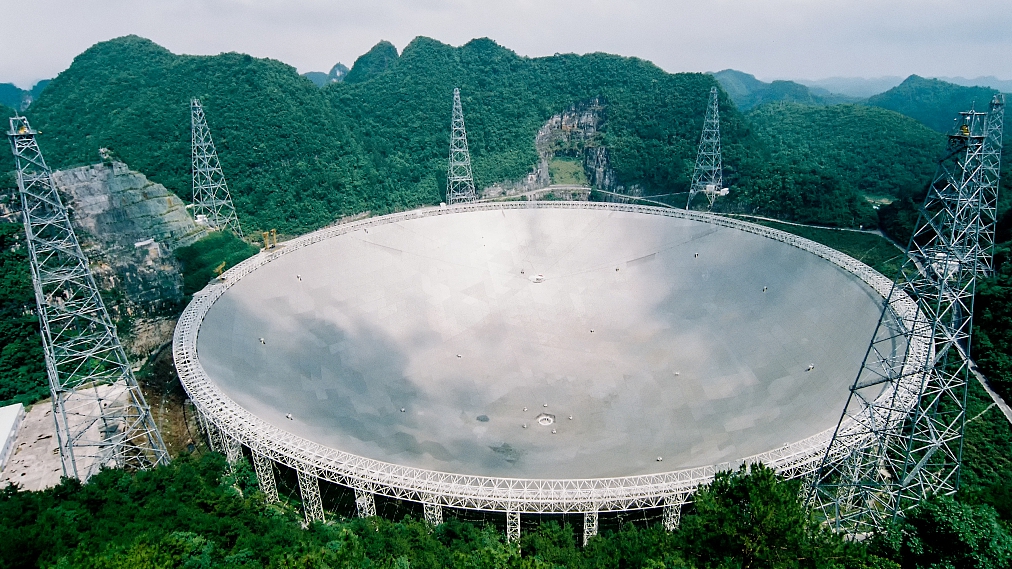
China's first patent rights holder Hu Guohua shows his patent of "85100001.0" in Beijing, China, September 16, 2019. /CFP
China's first patent rights holder Hu Guohua shows his patent of "85100001.0" in Beijing, China, September 16, 2019. /CFP
Thirty-seven years ago when China's first patent rights holder Hu Guohua applied for his scientific patent, the aerospace engineer had to queue overnight outside China's patent office.
It wasn't until eight months later that he finally received a patent certificate for his invention of a color display device to help analyze satellite images.
Much has changed over the years. In 2019, China overtook the U.S. as the top source of international patent applications filed with the World Intellectual Property Organization (WIPO) and has since stayed at the top.
A patent certificate is no longer an uncommon thing in China. The average ownership of invention patents reached 15.8 patents per 10,000 people by the end of 2020, exceeding the target of 12 patents set in the country's 13th Five-Year Plan period (2016-2020).
In 1999, the WIPO received just 276 applications from China, and by 2021, the number skyrocketed to 69,540, marking a 250-fold increase in 22 years.
Endeavors and gains
China has implemented numerous reforms to add efficiency to the entire system and has established itself as a leader in the world's intellectual property sector.
The country's rapid growth to become the top filer of international patent applications was hailed by WIPO Director General Daren Tang as "an amazing achievement."
Hu's patent certificate has been in the National Museum of China collection since the patent expired. He kept a copy, as it is an important record of his innovative work.
The 79-year-old scientist has never stopped his pursuit of innovations, having obtained patent rights on at least 10 inventions over the past decades. He has also espied China's rise to prominence as a veritable intellectual property (IP) powerhouse.
Though competition has become much fiercer today, there is no need to queue up to file an application as Hu did over three decades ago.
China's patent evaluation system has been streamlined to the point that it can now be deemed world-class.
The average processing time for the examination of invention patents was shortened to 20 months, while trademark registrations take just around four months.
The National Intellectual Property Administration (NIPA) has also established more than 40 centers nationwide, offering quicker services and reducing the duration and cost of IP protection.

The 500-meter Aperture Spherical Radio Telescope, which China holds the intellectual property rights to, in Pingtang County, Guizhou Province, China. /CFP
The 500-meter Aperture Spherical Radio Telescope, which China holds the intellectual property rights to, in Pingtang County, Guizhou Province, China. /CFP
Legal acts to attract foreign investors
China's Patent Law came into effect on April 1, 1985, and the patent office received more than 3,400 applications on the very first day.
While China has taken the global lead in the number of applications for patents, trademarks and industrial designs, it has also made enormous efforts to promote the transformation of this sector from pursuing the expansion of scale to quality improvement.
The country has attached greater importance to stronger legislation, with stringent punishment for any related violations.
Since 2019, it has promulgated a series of laws, regulations and IP protection guidelines, including the Foreign Investment Law, to create a fairer, more transparent and predictable business environment for foreign investors.
China also took measures including ending all patent subsidies and cracking down on improper behavior, to rectify the simple pursuit of patent quantity. And these efforts have won international recognition. According to the WIPO's latest Global Innovation Index 2021 report, China moved up from the 35th place in 2013 to 12th in the world ranking and is now "knocking at the door of the top 10" among 132 economies, which "underlines the continued importance of governmental policies and incentives to stimulate innovation."

China's Patent Law came into effect on April 1, 1985. /CFP
China's Patent Law came into effect on April 1, 1985. /CFP
The Chinese currency renminbi has become the pricing and settlement currency of international expenses related to the WIPO's Patent Cooperation Treaty.
The China-European Union (EU) agreement on geographical indications (GI) took effect last year, which enables consumers from China and the EU to buy 100 authentic specialties, including wine, tea and agricultural products, from each other without worries about inferior quality or fake goods.
And the trend is only growing, with China promoting similar bilateral GI cooperation with France, Thailand and Japan.
China will continue to leverage IP to drive innovation, particularly in meeting the demand for new technologies and industries such as big data, artificial intelligence, gene technology and blockchain, Shen Changyu, head of the NIPA, told a press conference earlier this week.
Last year, China released the Outline of Building an Intellectual Property Rights Powerhouse (2021-2035), setting new goals for the next 15 years. China will seek to participate more in global IP governance and strengthen international cooperation, Shen added.
(With input from Xinhua)

